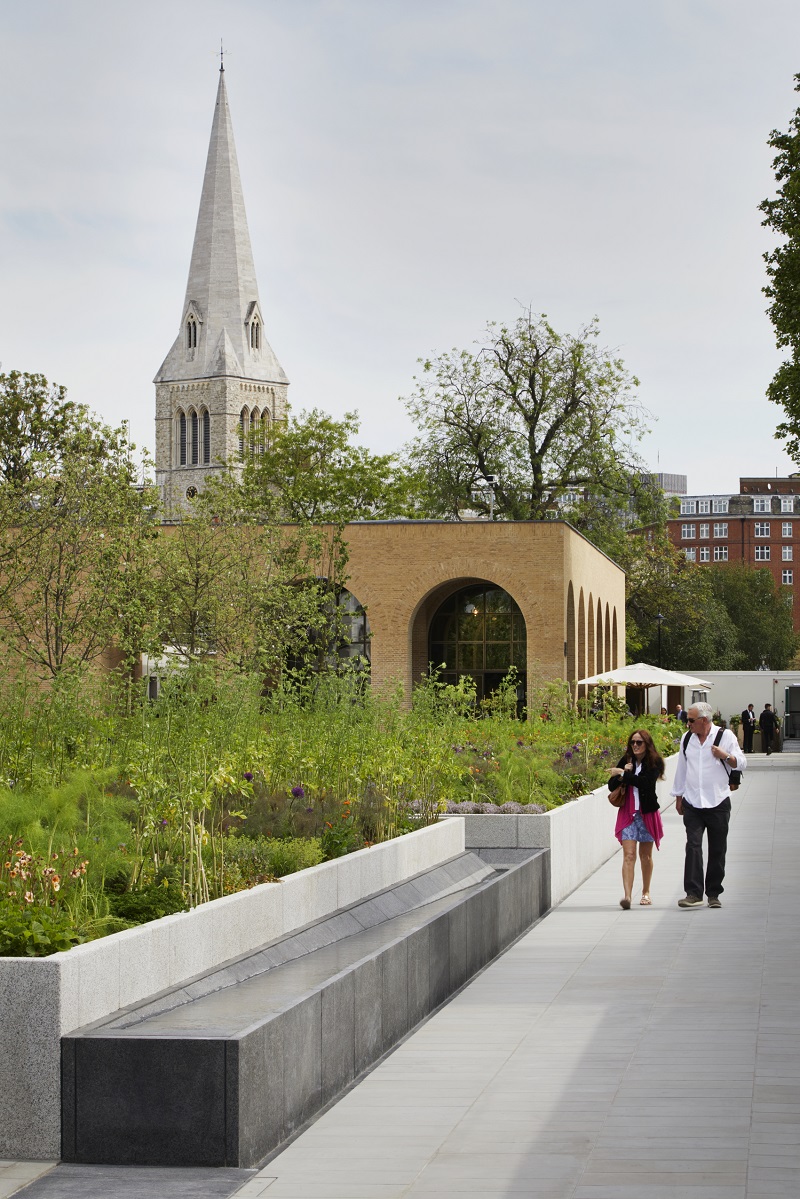Project showcase
Chelsea Barracks, Westminster - Qatari Diar Development Company with Squire & Partners

This unique garden dedicates a series of residential buildings as part of a 12.8-acre masterplan in Belgravia, with aims to improve the environment for locals, businesses and the wider community. With 40% (5 acres) of its site dedicated to Belgravia Square Garden, the garden highlights historic views through the site.
Where is the project located - please enter full address and postcode?
Chelsea Barracks, Belgravia, SW1W 8RH
Who is the developer/client of the project?
Qatari Diar Development Company
Describe the context of this project and how it has made a positive contribution to urban life or user experience of this place in 250 words max. and please upload an image of the project in its wider context or a drawing that best situates the project in its location.
The history of this unique green space stretches back to the 13th Century. It is Chelsea Barracks Phases 1-3 delivers a series of residential buildings as part of a 12.8-acre masterplan in Belgravia. The vision was to enhance cultural, aesthetic, social and economic value - improving the environment for local residents, businesses and the wider community, and connect it seamlessly with the wider context. The resulting design dedicates 40% (5acres) of the site to Belgravia Square gardens, creating public space through the development for the first time in over 150 years. The gardens highlight historic views through the site, with buildings positioned in the spaces between.
Squire & Partners, Dixon Jones and landscape designer Kim Wilkie were selected by Qatari Diar to masterplan the former Chelsea Barracks site in 2009. Phases 1-3 completed in 2019 with landscape design by Gustafson Porter+Bowman.
The brief was to reconcile the density required to deliver a viable scheme, with an aspiration to connect it seamlessly into the wider context, creating a new piece of London rooted in Belgravia. To achieve this, a framework for the 12.8-acre site was established - with new streets, gardens and squares connecting the masterplan with the existing urban pattern.
Inspired by the evolution of London’s Great Estates and the formal Georgian squares of Belgravia, the gardens were designed first, highlighting historic views through the site, with the buildings positioned in the spaces between. Placing the residences around the landscaped public routes and squares ensured that the development would be accessible to the local community and evolve as a natural addition to the area.
What do you see as the greatest success of this project? 250 words max. Please attach an image of the project that supports your statement.
Chelsea Barracks opens up the site for the first time since the mid-19th century to connect and ground it to its surroundings and create accessibility for all, with 40% of the 12.8-acre site dedicated to seven contemporary Belgravia Square gardens, creating permeable public green space and walkways through the development. The masterplan identifies a sustainable mix of community uses and landscaped public realm to create a place which feels like a natural part of London’s evolution, built on its past but looking to the future.
Calm and discrete Whistler Square, surrounded by townhouses has a subtle water feature. Mulberry Square continues the theme of water and a large culinary garden takes inspiration from artist Bridget Riley. Garrison Square is conceived as a small piazza overlooked by the listed Garrison Chapel and Bourne Walk is a tree-lined ecology corridor, fostering a space for native woodland flora and fauna and a link between the Thames with Sloane Square.
How does this public space bring people together, encourage inclusivity, and make a positive environmental impact to the wider place? 250 words max. Please attach an image of the project that supports your statement.
As masterplanners and in conjunction with the wider design team, we developed strategies that allowed us to design a large development that responded to the needs of its occupants, wider community and stakeholders and also its long-term sustainability agenda.
The masterplan provides a mix of uses with a density appropriate to its local context; and creates a range of green spaces, productive landscapes and habitats that enhance biodiversity. Sustainable landscape strategies included planting native species, increased biodiversity and habitats, and irrigation through water collection.
The landscape design goes beyond Part M requirements, with the creation of a fully-accessible public realm that is supportive of all users, and inclusive to their needs. The incorporation of level footways with legible tactile and colour differentiation, gentle gradients are further complemented through the inclusion of warm to touch handrails, sensory planting, and regular seating to create a universally accessible landscape.
Please share any data or figures that support your entry about how this public space or landscape intervention has made a positive social, economic or environmental impact, for example biodiversity, increased dwell time, flood or drainage mitigation, wellness or safety. You may also attach an additional image or document to support your entry.
We worked closely over years with local residents/businesses, Westminster City Council and community groups. Following 88 public consultations, aspirations included: a seamless evolution of Belgravia that served the wider community; accessible streets/green spaces; recognition of the historic Ranelagh Grove axis; and views of St Barnabas’ spire.
All were successfully delivered. Seven gardens were designed first, highlighting historic views through the site, with buildings positioned in-between. By placing the residences around the public routes and spaces, this ensured the development would be accessible to the local community and evolve as a natural addition to the area.
The development delivers world-class housing, new green space and amenities for residents and the local community. The masterplan will create 448 homes including 126 affordable, and a report commissioned by the client at the start of the project suggested 195-275 jobs across all floor space areas will be created - an uplift of 3% within the local area.
In May 2019, whilst Phase I was under construction, part of the site was temporarily opened for the first time to share the newly completed Mulberry Square and Bourne Walk with the public in support of the local Chelsea Flower Show.
‘Bicameral’, a public sculpture by Conrad Shawcross installed at Dove Place is the first artwork in a program of public commissions for the new neighbourhood to enhance the public realm.
In 2021, the masterplan was the first in Europe and on of 16 developments in the world to be awarded LEED Platinum certification for Neighbourhood Design.
Festival of Pineapples
24-26 February 2026
Pineapples prize giving night
April
Pineapples at Festival of Place
10 June 2026
© The Pineapples - Tweak Ltd. 124 City Road, London, EC1V 2NX. Tel: 020 3326 7238




